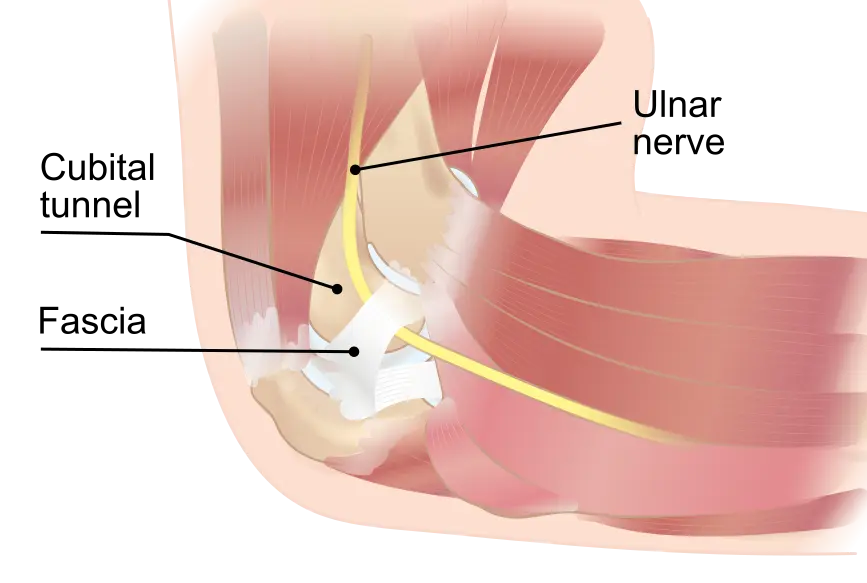Tarsal tunnel syndrome (TTS) is a debilitating condition characterized by compression or entrapment of the posterior tibial nerve within the tarsal tunnel, resulting in pain, sensory disturbances, and motor deficits in the foot and ankle. Prompt and accurate diagnosis of TTS is crucial for initiating appropriate management strategies and optimizing patient outcomes. Electromyography (EMG) and nerve conduction studies (NCS) emerge as indispensable tools in the diagnostic armamentarium, offering valuable insights into nerve function and pathology. In this article, we delve into the pivotal role of EMG/NCS in unraveling the complexities of TTS, elucidating its diagnostic utility, and its significance in determining severity.
Understanding Tarsal Tunnel Syndrome: Tarsal tunnel syndrome refers to the compression or entrapment of the posterior tibial nerve and its branches as they pass through the tarsal tunnel, a fibro-osseous canal located along the medial aspect of the ankle. Etiologies of TTS include anatomical variations, trauma, inflammatory conditions, space-occupying lesions, and systemic diseases like diabetes mellitus. Clinically, TTS presents with a spectrum of symptoms, including pain, numbness, tingling, burning sensations, and weakness, typically radiating along the distribution of the posterior tibial nerve, encompassing the sole of the foot and toes. Diagnosis of TTS requires a comprehensive clinical evaluation, supported by ancillary tests like EMG/NCS to confirm nerve dysfunction and localize the site of compression.
Role of EMG/NCS in Diagnosis: Electromyography (EMG) and nerve conduction studies (NCS) play a pivotal role in the diagnostic workup of TTS, offering valuable insights into nerve function and pathology. EMG involves the assessment of muscle electrical activity using needle electrodes, facilitating the identification of abnormal spontaneous activity and motor unit recruitment patterns indicative of nerve injury or dysfunction. In TTS, EMG may reveal denervation changes in muscles innervated by the posterior tibial nerve, such as the abductor hallucis or flexor digitorum brevis, corroborating the clinical suspicion and pinpointing the site of nerve compression.
Complementing EMG, nerve conduction studies (NCS) evaluate the integrity and function of peripheral nerves by measuring the speed and amplitude of nerve impulses. Specifically, for TTS, NCS enables the assessment of sensory and motor conduction along the posterior tibial nerve pathway, aiding in localization and quantification of nerve damage. Reduced conduction velocities, diminished compound muscle action potentials (CMAP), and sensory nerve action potentials (SNAP) serve as hallmark findings, indicative of nerve demyelination or axonal loss secondary to compression within the tarsal tunnel.
Diagnostic Challenges and Differential Diagnosis: Despite the diagnostic utility of EMG/NCS, differentiating TTS from other lower extremity neuropathies can pose challenges, necessitating a comprehensive approach to differential diagnosis. Conditions mimicking TTS include peripheral neuropathies, lumbar radiculopathies, entrapment neuropathies at other anatomical sites, and musculoskeletal disorders affecting the foot and ankle. Hence, meticulous clinical correlation, coupled with judicious utilization of ancillary tests and imaging studies, remains paramount for accurate diagnosis and differentiation.
Assessing Severity and Prognosis: Beyond diagnosis, EMG/NCS play a crucial role in assessing the severity and prognostication of TTS, guiding therapeutic interventions and prognosticating outcomes. The extent of nerve dysfunction, characterized by the degree of sensory and motor involvement, aids in stratifying the severity of TTS, ranging from mild sensory disturbances to profound motor impairment and muscle atrophy. Moreover, longitudinal monitoring of nerve conduction parameters facilitates tracking disease progression, response to treatment, and prognostication of functional outcomes, thereby optimizing patient care and rehabilitation strategies.
Therapeutic Implications and Management: Armed with comprehensive diagnostic insights gleaned from EMG/NCS, tailored therapeutic interventions can be initiated to alleviate symptoms, mitigate nerve compression, and optimize functional outcomes in TTS. Management strategies encompass a multidisciplinary approach, incorporating conservative measures such as activity modification, orthotic devices, physical therapy, and pharmacotherapy for pain management. In refractory cases or those with significant nerve compression, surgical decompression of the tarsal tunnel may be warranted to alleviate symptoms and prevent irreversible nerve damage.
Emerging Trends and Future Directions: Continual advancements in neurophysiological techniques and imaging modalities promise to augment the diagnostic precision and therapeutic efficacy in TTS. Novel approaches such as high-resolution ultrasound, magnetic resonance neurography, and dynamic imaging modalities hold promise in providing enhanced anatomical localization, functional assessment, and prognostic value. Furthermore, the advent of minimally invasive surgical techniques and targeted interventions, including nerve hydrodissection and neuromodulation, herald a new era in the management of TTS, offering the potential for improved outcomes and patient satisfaction.
Conclusion: Electromyography (EMG) and nerve conduction studies (NCS) stand as indispensable tools in the diagnosis, severity assessment, and therapeutic management of tarsal tunnel syndrome. By unraveling the intricacies of nerve function and pathology, EMG/NCS empower clinicians with invaluable diagnostic insights, guiding personalized treatment strategies, and optimizing patient outcomes. As we navigate the horizon of neurophysiological advancements, EMG/NCS continue to illuminate the path towards unraveling the complexities of TTS, fostering innovation, and refining therapeutic paradigms to enhance the quality of life for affected individuals.





